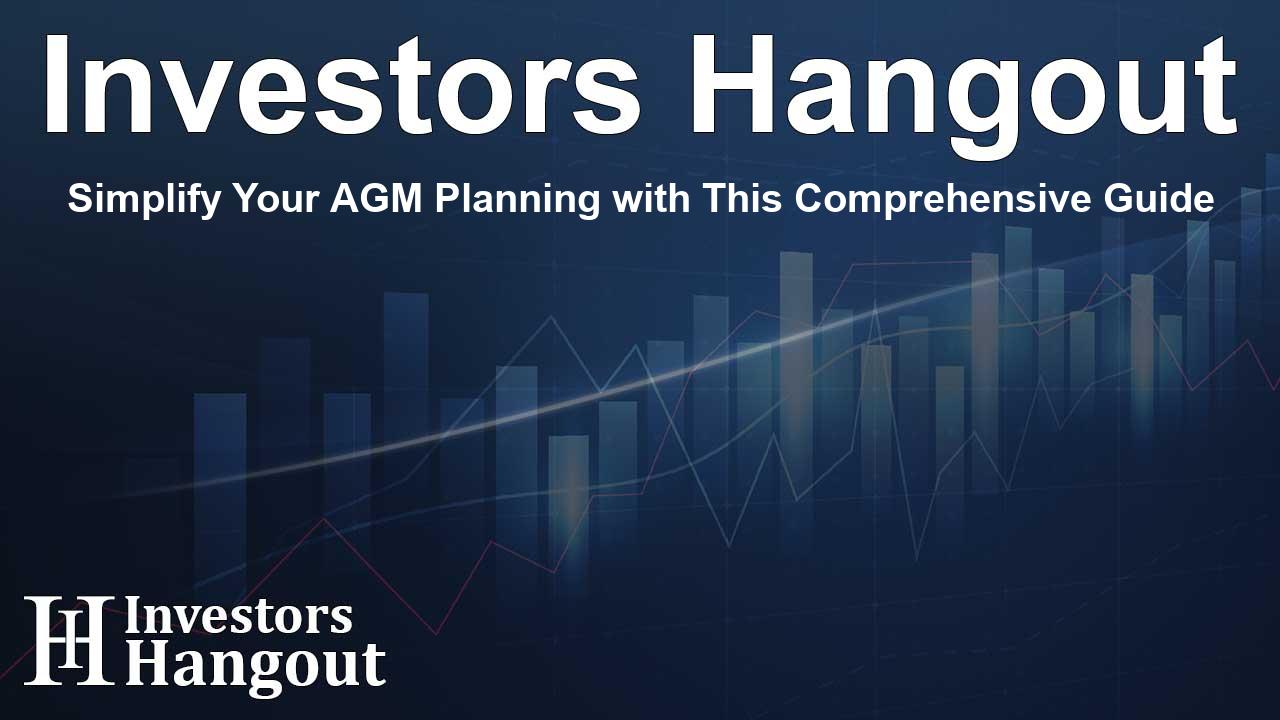Simplify Your AGM Planning with This Comprehensive Guide

Mastering AGM Planning: Your Essential Checklist
Planning an Annual General Meeting (AGM) can be a complex process, but with the right approach, it becomes manageable and even enjoyable. Being organized and following a systematic plan is key. This guide provides a structured checklist to help you navigate through the AGM planning process seamlessly.
Understanding the Importance of a Structured AGM
Running a successful AGM is crucial for any organization, whether you're a small startup or a large corporation. It’s not just about compliance; it's your opportunity to engage with shareholders, share vital updates, and foster transparency. A well-executed AGM can enhance trust and encourage long-term investment.
Key Objectives of an AGM
During the AGM, several essential objectives need to be met:
- To present the annual report and financial statements
- To elect or re-elect board members
- To approve dividends and executive compensation plans
- To address shareholder questions and concerns
Follow a 13-Step Checklist for Your AGM
The following checklist will guide you through each necessary step in planning your AGM. This structured approach will save you stress and time, ensuring a smooth experience for everyone involved.
Step 1: Define the Agenda
Your first task is to outline the agenda. Determine the main topics to be discussed, ensuring relevance to your stakeholders.
Step 2: Notify Stakeholders
Once the agenda is established, send notifications to your shareholders and stakeholders. Include details on the date, time, and location, allowing ample time for participation.
Step 3: Prepare Meeting Materials
Compile all necessary documents, such as financial reports, proposals for voting, and minutes from previous AGMs. Ensure these materials are accessible ahead of time.
Step 4: Set Up Technology for Remote Participants
In today’s world, virtual attendance is essential. Arrange the necessary video conferencing tools to accommodate remote attendees.
Step 5: Conduct a Rehearsal
Run through the meeting with your team to ensure everyone is prepared and familiar with their roles. This rehearsal will help identify any potential issues.
Step 6: Focus on Corporate Governance Compliance
Make sure all procedures comply with corporate governance regulations, avoiding potential legal issues.
Step 7: Engage Shareholders
Develop strategies to keep shareholders engaged and interested before and during the meeting, such as interactive Q&A sessions and polls.
Step 8: Manage Time Wisely
Allocate time for each agenda item and stick to it. A well-timed meeting respects everyone’s time and maintains engagement.
Step 9: Facilitate Q&A Sessions
Prepare for the live Q&A by anticipating potential questions and having answers ready. This openness will foster a positive atmosphere.
Step 10: Document the Meeting
Have someone assigned to take minutes of the meeting. This documentation is crucial for record-keeping and future reference.
Step 11: Follow Up Post-Meeting
Send a follow-up message to all attendees thanking them for their participation and sharing key outcomes from the meeting.
Step 12: Analyze Feedback
Gather feedback from attendees regarding the AGM experience. Use this information to improve future meetings.
Step 13: Prepare for Next Year
Reflect on the AGM process and plan for next year's meeting. Start compiling ideas and notes for continuous improvement.
About Notified
Notified is committed to supporting businesses in managing their communications effectively. As a dedicated technology partner for investor relations and public relations professionals, we provide tools that enhance corporate narratives. Our platforms streamline various processes, from media outreach to regulatory compliance, ensuring your message reaches the right audience. Together with GlobeNewswire, we leverage over 30 years of experience in delivering accurate news distribution, empowering organizations to build strong connections with their stakeholders.
Media Contact
For inquiries, please contact Caroline Smith at Caroline.smith@icrinc.com.
Frequently Asked Questions
What is an AGM?
An AGM is an Annual General Meeting where shareholders gather to discuss key company matters and vote on important decisions.
Why is it important to follow an agenda during an AGM?
Having an agenda promotes organization and ensures that all vital topics are covered during the meeting, maximizing efficiency.
How can technology improve an AGM?
Utilizing technology allows for remote participation, wider audience engagement, and enhances the overall meeting experience.
What roles should individuals play in an AGM?
Roles can include the chairperson, minute-taker, presenters of financial reports, and moderators for discussions and Q&A sessions.
How do I ensure compliance with corporate governance?
Focusing on established regulations, preparing necessary documentation, and consulting legal advisors will help maintain compliance standards.
About The Author
Contact Dominic Sanders privately here. Or send an email with ATTN: Dominic Sanders as the subject to contact@investorshangout.com.
About Investors Hangout
Investors Hangout is a leading online stock forum for financial discussion and learning, offering a wide range of free tools and resources. It draws in traders of all levels, who exchange market knowledge, investigate trading tactics, and keep an eye on industry developments in real time. Featuring financial articles, stock message boards, quotes, charts, company profiles, and live news updates. Through cooperative learning and a wealth of informational resources, it helps users from novices creating their first portfolios to experts honing their techniques. Join Investors Hangout today: https://investorshangout.com/
The content of this article is based on factual, publicly available information and does not represent legal, financial, or investment advice. Investors Hangout does not offer financial advice, and the author is not a licensed financial advisor. Consult a qualified advisor before making any financial or investment decisions based on this article. This article should not be considered advice to purchase, sell, or hold any securities or other investments. If any of the material provided here is inaccurate, please contact us for corrections.
